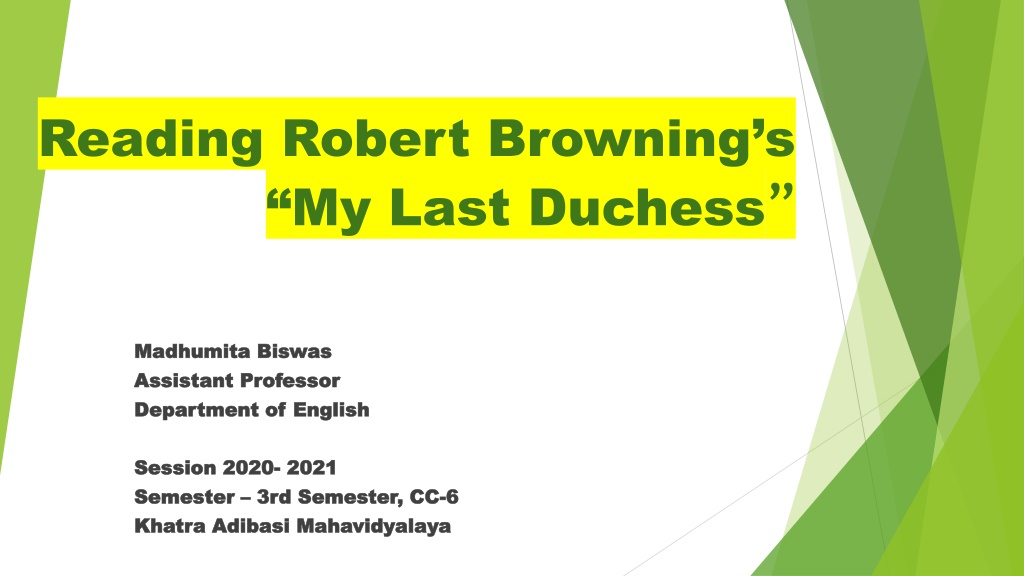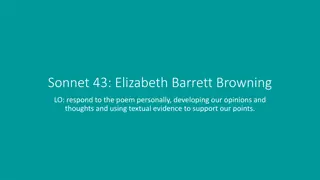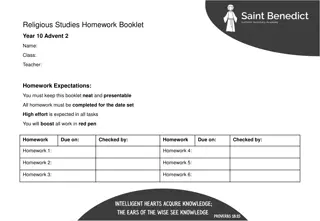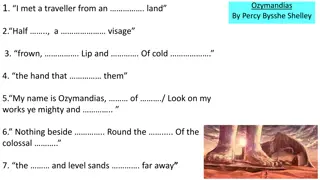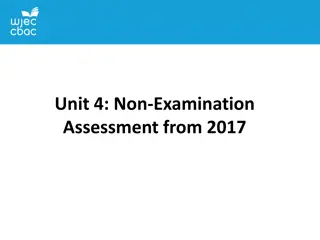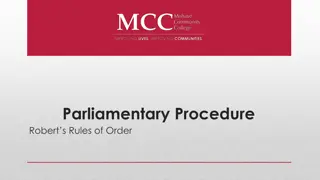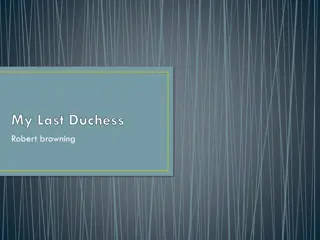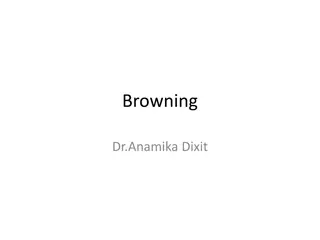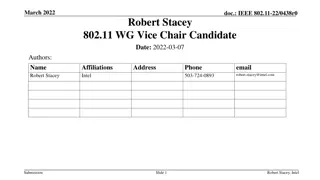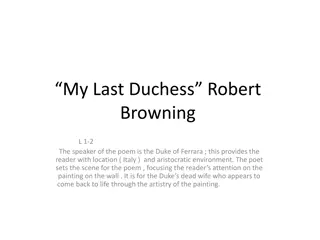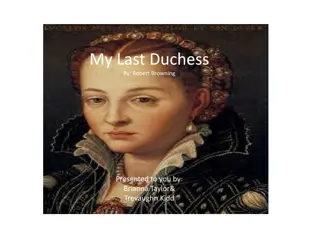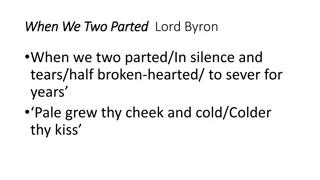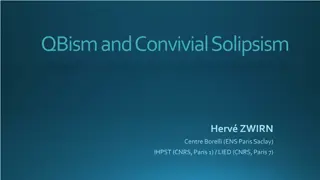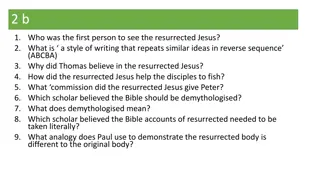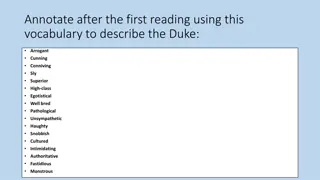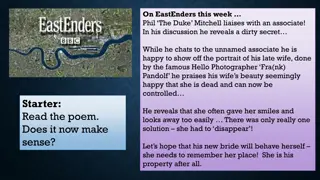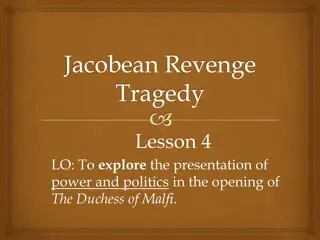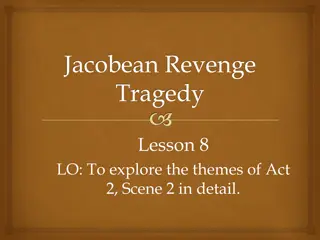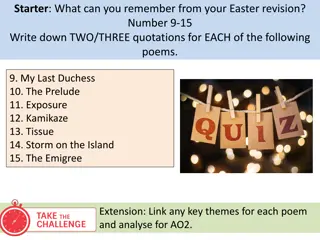Understanding "My Last Duchess" by Robert Browning - Analysis and Interpretations
This analysis delves into the dramatic monologue "My Last Duchess" by Robert Browning, exploring themes of power, control, and possession through the Duke's chilling narrative about his late wife. The in-depth examination reveals the Duke's possessive nature, shedding light on societal expectations of women in the Victorian era and prompting reflections on the reliability of the speaker's perspective.
Download Presentation

Please find below an Image/Link to download the presentation.
The content on the website is provided AS IS for your information and personal use only. It may not be sold, licensed, or shared on other websites without obtaining consent from the author. Download presentation by click this link. If you encounter any issues during the download, it is possible that the publisher has removed the file from their server.
E N D
Presentation Transcript
Reading Robert Brownings My Last Duchess Madhumita Biswas Madhumita Biswas Assistant Professor Assistant Professor Department of English Department of English Session 2020 Session 2020- - 2021 Semester Semester 3rd Semester, CC 3rd Semester, CC- -6 6 Khatra Khatra Adibasi Adibasi Mahavidyalaya Mahavidyalaya 2021
Key points of the poem: My Last Duchess" is a dramatic monologue that reveals the character of the Duke through his speech and actions. The poem explores themes of power, control, and possession, as the Duke speaks about his late wife and her supposed transgressions. The use of the word "my" in the title emphasizes the Duke's possessive and controlling nature towards his wife. The painting of the Duchess in the poem serves as a symbol of the Duke's attempt to control her image and memory even after her death.
What is a Dramatic monologue? In its fullest form, a dramatic monologue consists of a lengthy speech uttered by a fictional or historical character, usually addressed to an imaginary audience or to a silent listener. It typically involves a critical moment of a specific situation, with the speaker s words unintentionally providing a revelation of his or her true character and temperament. One way of conceiving the dramatic monologue, then, would be to consider it as a one-act play that had shrunk to one speech by one character.
In-depth reading of the poem: The Duke's jealousy and mistrust towards the Duchess is revealed through his suspicions of her smiling and flirting with other men. The Duke's use of the word "spotless" to describe the Duchess highlights his desire for her to be perfect and obedient. The Duke's command to "stop" the painting of the Duchess suggests his desire to control her actions and emotions even in death.
Inferences: The Duke's killing of the Duchess can be seen as an extreme manifestation of his possessive and controlling nature. The poem can be interpreted as a commentary on the societal expectations and treatment of women in the Victorian era. The poem's use of the dramatic monologue form allows the reader to gain insight into the Duke's mind and motivations, and raises questions about the reliability of the speaker's perspective.
Key points: The poem can be seen as a representation of the patriarchal power dynamics of Victorian society, where men held complete control over women, including their lives, bodies, and reputations. The Duke s monologue can be interpreted as an embodiment of the idea of the male gaze, as he presents himself as the one who has the power to look, judge, and control the image of his wife. The Duke's use of figurative languages, such as metaphor and simile, serves to dehumanize the Duchess, reducing her to an object of his possession. The poem can be read as a critique of the societal expectation of women to be submissive and obedient, as the Duchess is punished for her supposed disobedience. The poem can also be read as a commentary on the performative nature of Victorian courtship and marriage, where women were expected to put on a facade of perfect obedience and submissiveness.
Key points: The Duke's monologue can be interpreted as a demonstration of the ways in which language can be used to maintain power and control over others. The poem can be seen as a reflection of the societal pressure on men to maintain control over their women and prove their masculinity through their ability to dominate and possess. The Duke's monologue can be read as an expression of the fear and insecurity that often underlies possessive and controlling behavior. The Duchess can be seen as a precursor of the feminist literary figures that emerged in the later centuries, who challenge patriarchal norms and reject the objectification of women. The poem can be read as a cautionary tale about the dangers of toxic masculinity and the destructive nature of possessive and controlling relationships.
